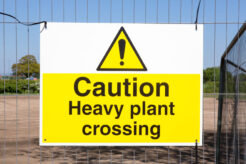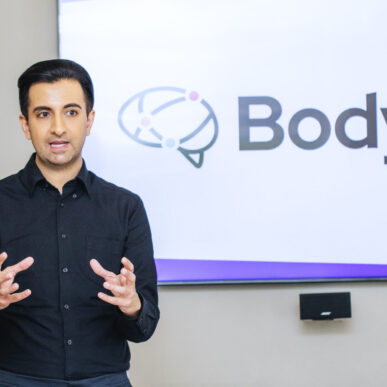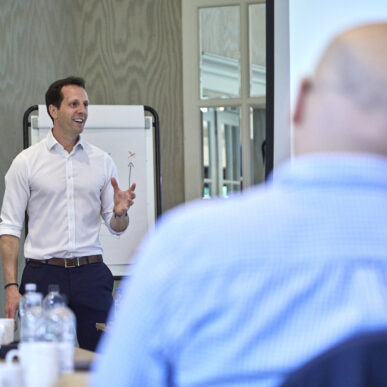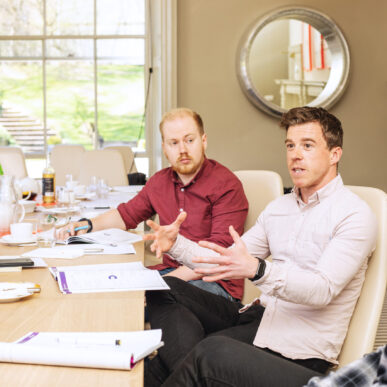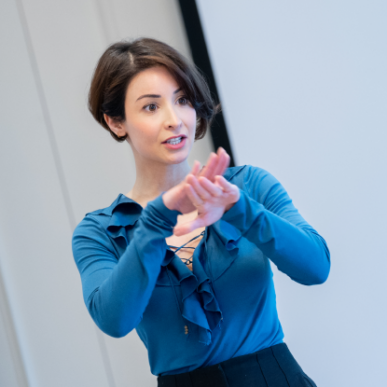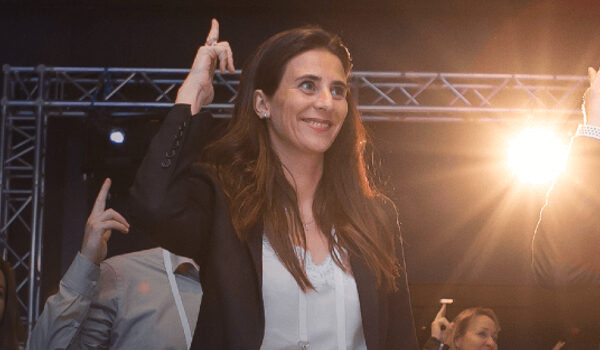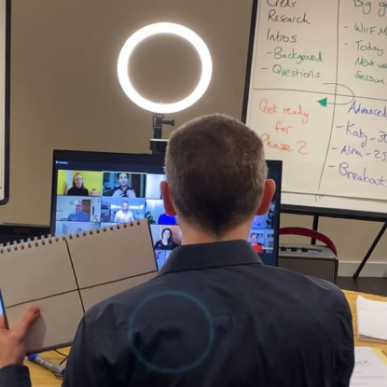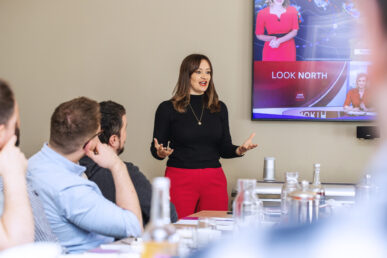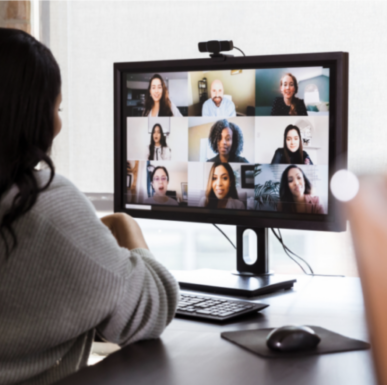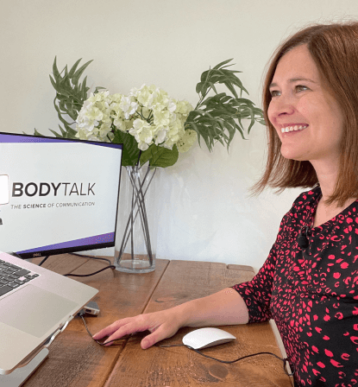If you’re delivering a presentation to a live audience, then the chances are you’ll be including a Q&A session at the end. Perhaps you’ve made a slide with some colourful question marks on it and ‘Any questions?’ written in a large font, but all too often this is where people’s preparation ends. While it may seem difficult to prepare for what’s essentially a wild card element, Q&A training can really help to make your presentation.
Why include a Q&A in your presentation?
A well-prepared Q&A session is your chance to shine, connect with your audience, and show that you really know your stuff — even when you’re off-script. And with a little bit of Q&A training, you can go from dreading the questions to actually enjoying them.
Here’s why Q&A sessions are really helpful:
- They keep things interactive – You’re not just broadcasting information; you’re having a conversation. This is really important, especially if the audience has been listening to you speak for a long time. Hearing different voices helps to focus people’s attention and make them feel they’re an important part of the presentation.
- They show you can think on your feet – Anyone can rehearse a script, parrot-fashion. But responding in real time is where your expertise really shines. This can help build your credibility in the eyes of your audience.
- They give you real-time feedback – If the same question keeps popping up, maybe there’s a point you could clarify earlier next time.
How Q&A training can help
Presentation training is essential for helping you feel prepared and confident ahead of a speech – and Q&A training can be a really useful part of this. During a Q&A session, you may feel more vulnerable or exposed than during your main presentation, as it’s difficult to know what to prepare for. A tricky question or push back may heighten your nerves, quicken your pace of speaking and bring back sentences full of filler words and fidgeting. Training with a coach can help you to field questions with confidence and authority, even if you don’t know the answer.
Here are some ways a coach can help you – and some tips to get you started.
Get ahead of the questions
While you can’t predict every question, you can prepare for most of them.
- Think like your audience – What might confuse them? What might they want to challenge? What sort of things have they pushed back on in the past? The more you can understand your audience and think like them in advance, the better prepared you will be when fielding their questions.
- Revisit your content – Go through your presentation. Which statistics, bold claims or new ideas are likely to get picked up? Make sure you are able to prove or verify any contentious claims or point the audience to the source of your information.
- Ask a colleague to play devil’s advocate – Sometimes we’re too close to our own material to see the gaps. Ask a trusted colleague to go through your presentation with you and ask questions (you can even ask them to ask tricky questions!). It’s often useful to do this with someone who hasn’t seen the presentation or the content before, so they have a fresh pair of eyes.
Explain how your Q&A will work
Letting your audience know at the beginning of your presentation how and when you want to receive questions is a useful tactic. For the audience, it helps them know what’s coming, and can also help to stave off any annoying interruptions.
You can say something simple like:
“I’ll leave some time for questions at the end, so feel free to jot down anything that comes up while I’m speaking.”
This puts people at ease and gives them permission to engage. Bonus: it buys you some time to mentally prepare too!
If it’s a big or more formal event, you might also want to explain how the Q&A will run (mics, hands up, written questions, etc.). Managing expectations keeps everything nice and smooth and will help you to appear in control.
How to handle questions live
Q&A training really starts to pay off when it comes to actually handling the questions in a live environment. When that first hand goes up, here’s what to remember:
- Pause before you answer – Take a second and breathe before speaking. You don’t need to launch into a response the moment someone stops talking. This will give you valuable thinking time (even a couple of seconds can help to organise your thoughts more coherently) and will also help you to come across as confident and authoritative.
- Clarify if needed – Don’t be afraid to say, “Let me check I’ve understood your question correctly…”. It shows you care about giving a relevant answer. Too often presenters will launch into an answer which isn’t quite what was asked…
- Keep your answers snappy – A Q&A isn’t the time for a second presentation! Short, clear answers are your friend. Don’t be tempted to waffle because you think talking more makes you look better – it doesn’t.
- Be honest – Don’t waffle. If you don’t know the answer something, say so. Vulnerability can help to build trust. A simple, “That’s a great question – and I’d love to come back to you on that,” is far better than bluffing.
What about those tricky questions?
Push backs, objections, curveballs… Whatever you want to call them, every speaker experiences those difficult questions at some point – the ones you really wish someone hadn’t asked…
These questions don’t have to throw you off, though. It is possible to stay calm under pressure and deal with objections in a way that is empathetic, clear and direct. Practising how to handle the unexpected gives you that extra edge.
- Pause and nod – It’s important to take a moment before launching into a response to a tricky question, as we can become defensive. Nodding and making eye contact shows the person that you’re considering their question – a useful non-verbal cue which can buy you a little time
- Don’t take it personally – If we’re not careful, our own emotional response can get in the way of successful business communication. Avoid losing your temper or snapping back: instead, enter into a friendly discussion with the objector.
- Demonstrate empathy – Even if it’s tough, try to see it from the other person’s point of view. Understanding their viewpoint – or simply showing that you want to understand – can diffuse tension.
- Ask TED questions to clarify further – You can ensure you’ve understood AND buy yourself some time by replying with a ‘TED’ question, such as ‘Tell me a little more about that…’, ‘Explain what it’s like for you…’ or ‘Describe a typical example of that for me.’ This will give you valuable insight and make sure you’re answering the real question.
How to end a Q&A session
Once you’ve answered the last question, don’t just trail off into “Okay, thanks, that’s it…”. Wrap things up with intention and leave your audience with a clear next step. You can think about:
- Thank the audience for their questions – This signals that you’re coming to an end and gives you the opportunity to grab people’s attention one final time.
- Recap the key point from your presentation – Bring it back to your message. Repeat the essence of it one final time.
- Offer a next step – “If you’d like to explore this further, come and say hello after / check out our website / drop me a message.”
Q&A Training: The Secret to Confidence
Q&A sessions can be nerve-wracking — but they can also be brilliant. With a bit of thought and some solid Q&A training, you’ll be able to handle tough questions with grace, connect more deeply with your audience and leave a lasting impression.
If you’d like to practice for your next Q&A, get in touch with our team today – we’d love to help you.



